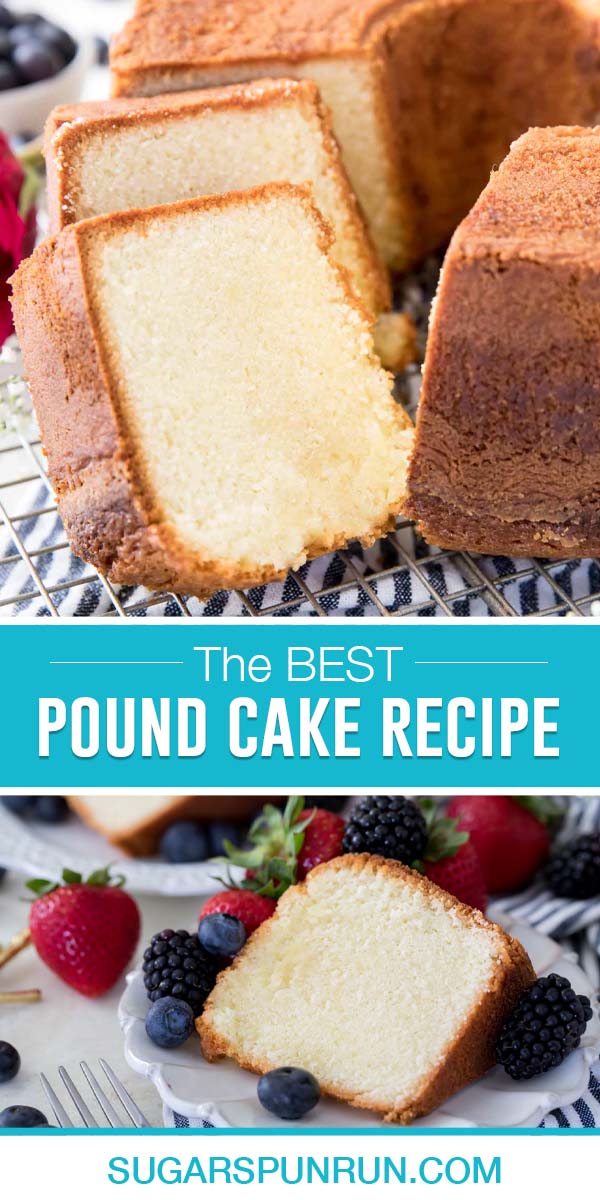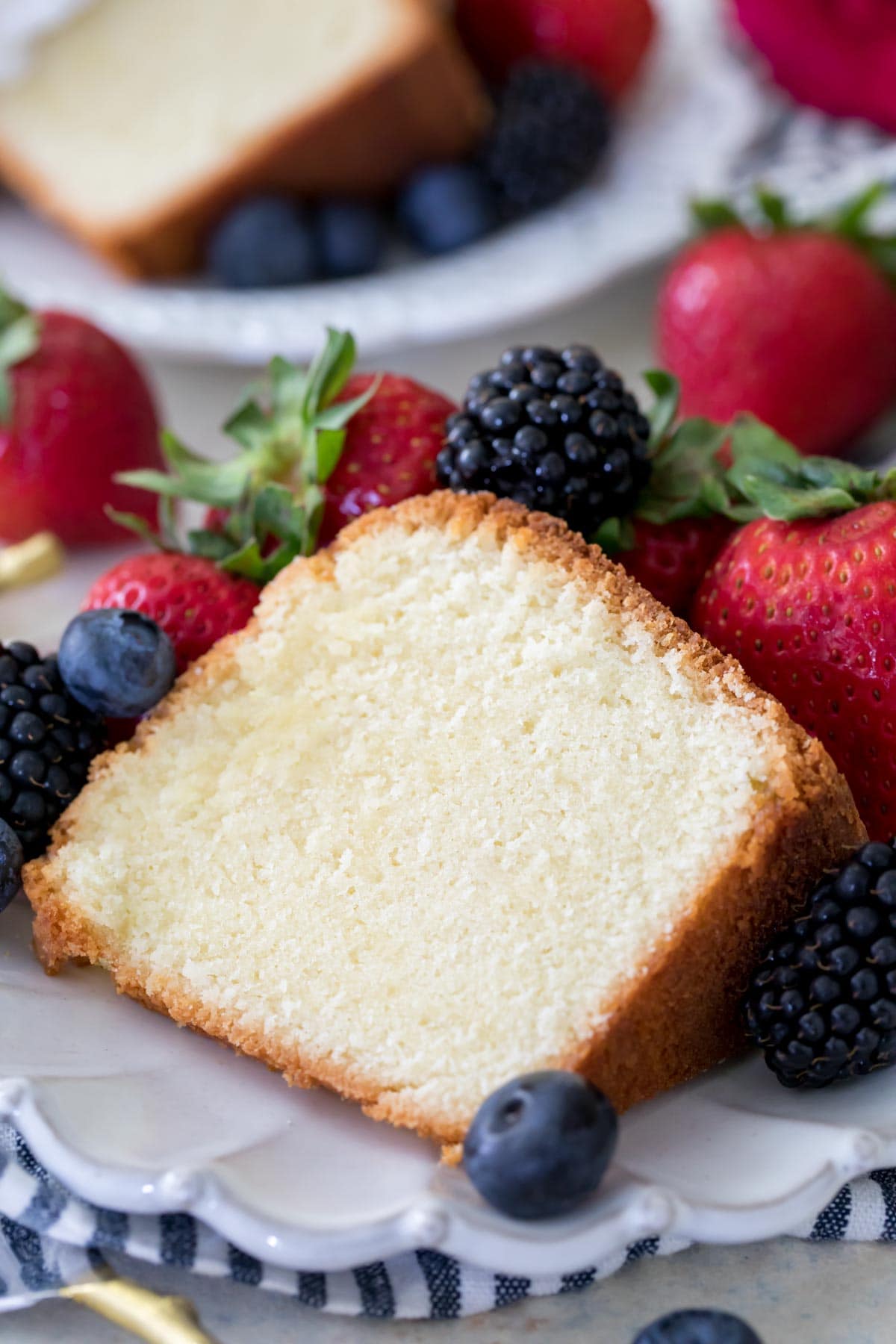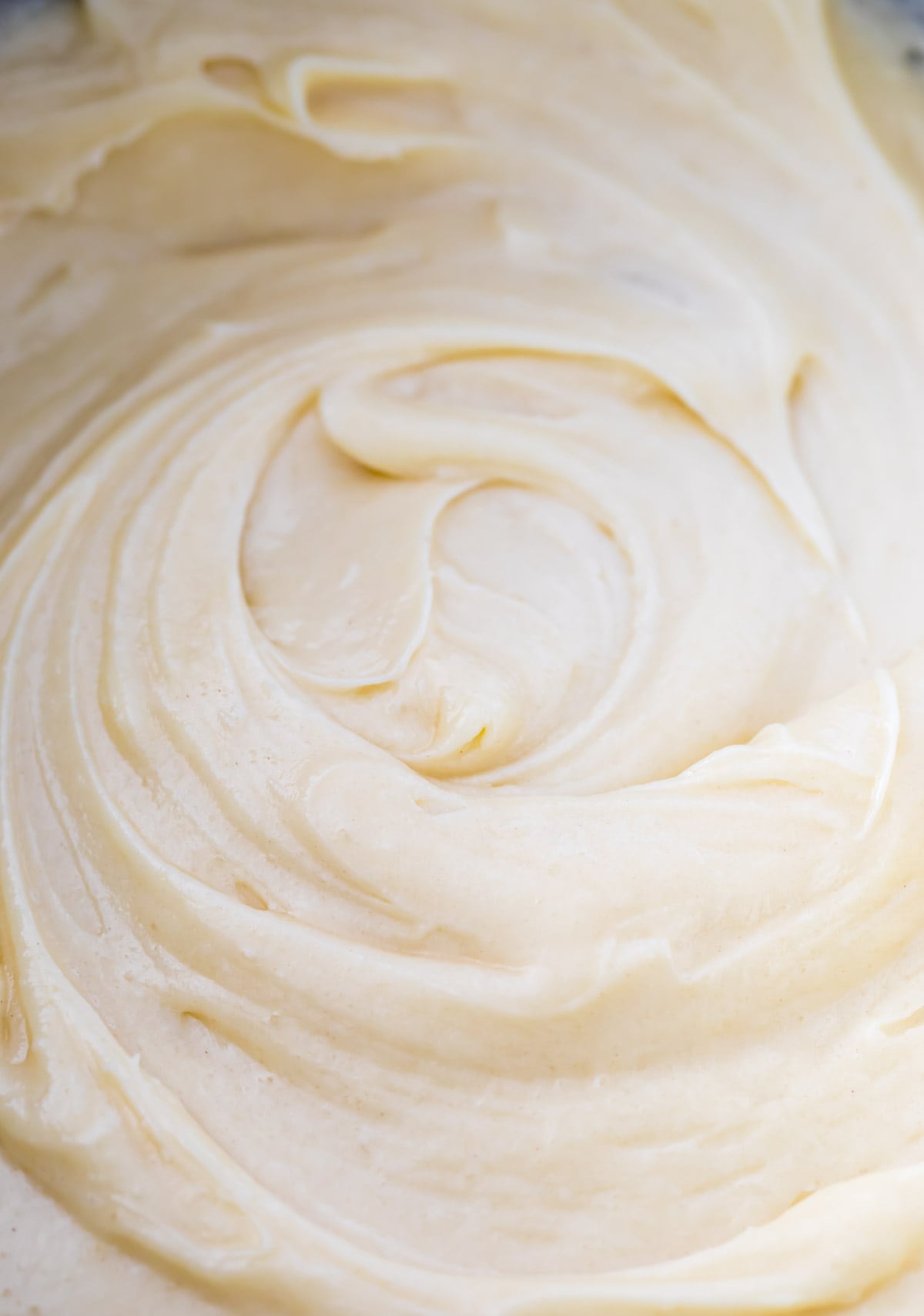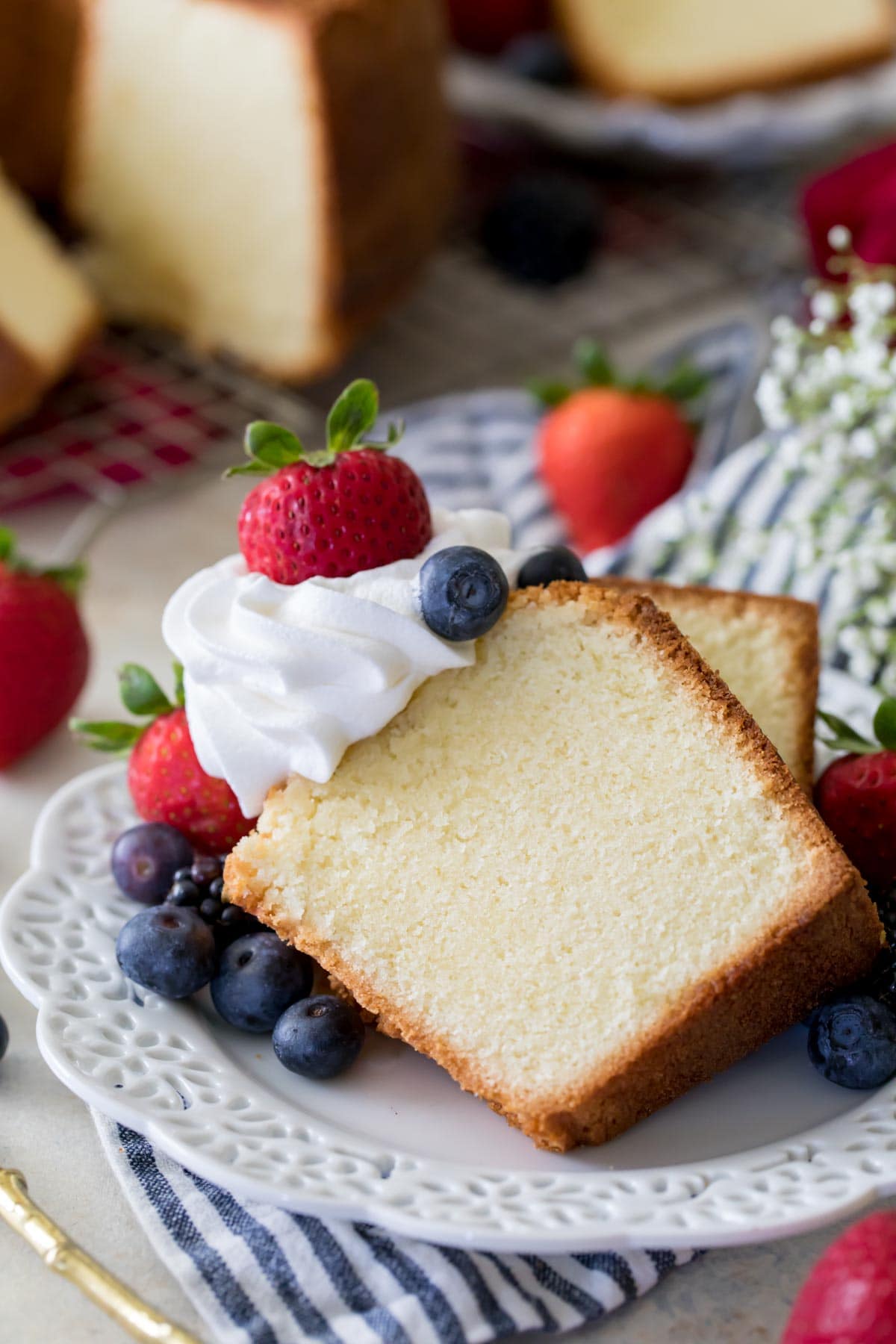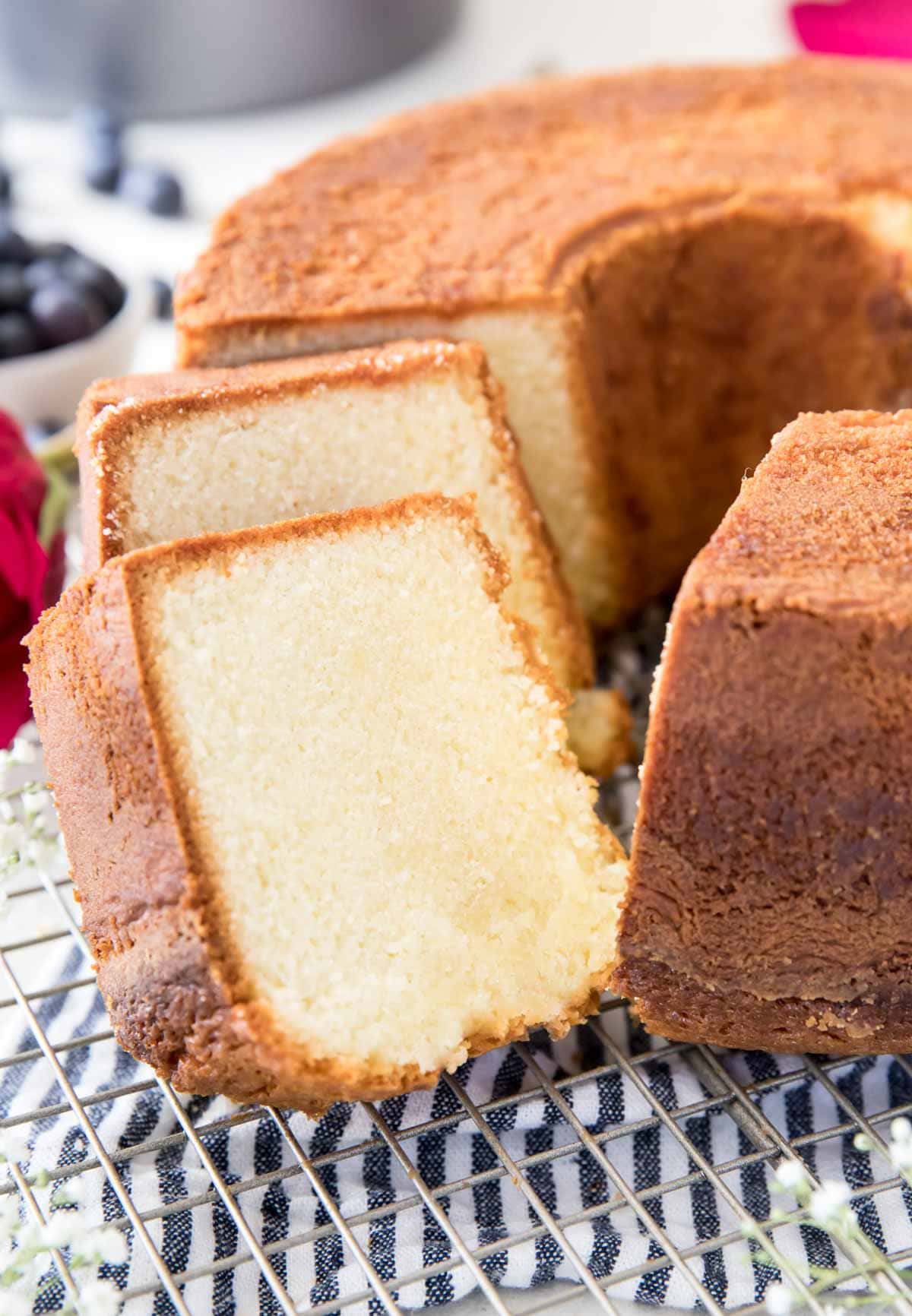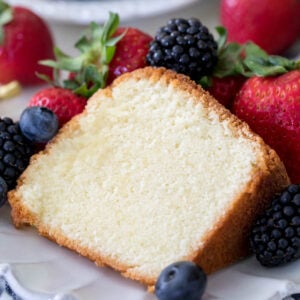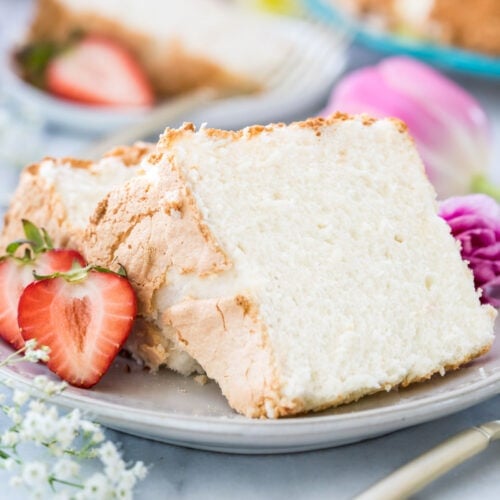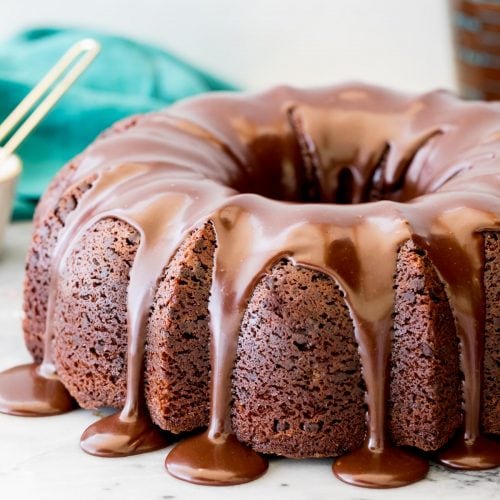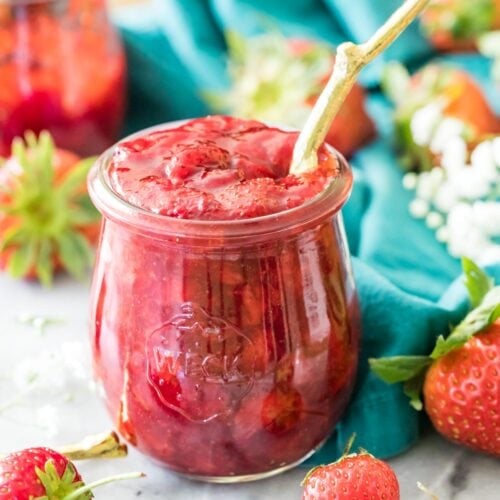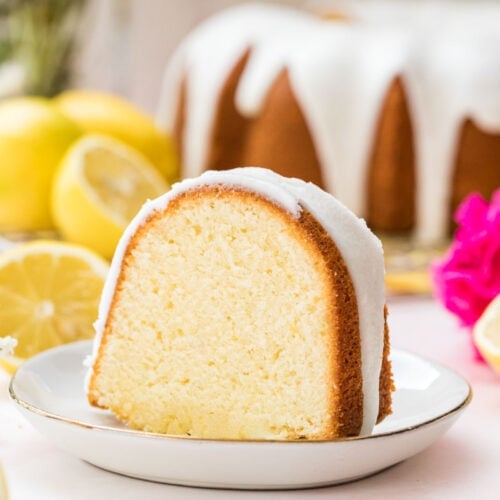Traditional Pound Cake (Made Better!)
I’m not sure where pound cake rates in terms of your favorite cake recipes, but I’ll admit it had never been a top contender for in my household. Humble and frosting-less, sure I would have a slice, but nobody in my house ever really got excited about pound cake, often overlooking it for light and fluffy angel food cake or prettily iced layer cakes. If your experience with pound cakes of the past is anything like mine, you’re in for a real treat today. I set about developing this recipe with a mission, determined to perfect a pound cake that was simple and not overly complicated, one that didn’t stray too far from the traditional version (no fancy or unusual ingredients) but at the same time put all of its predecessors to shame. Here you have it. Perfectly balanced, rich and sweet, my pound cake is so buttery and soft that melts in your mouth, and it’s anything but boring. It’s a heavy cake (as pound cakes should be!) with a dense, velvety crumb, but there’s nothing dry or crumbly about it. While this cake can hold it’s own, it’s even better when served with homemade whipped cream and fresh fruit. It would also pair well with a spoonful or two of lemon curd (a great way to use up some leftover egg yolks!). Break out your bowls–you’re going to need a big one–and let’s talk about what it is that makes this cake so perfectly special and irresistible.
What You Need (and What You DON’T)
Pound cake has traditionally been made with a pound each of butter, sugar, eggs, and flour. When developing my recipe, I wanted to stay as true as I could to the traditional version, but some small adjustments were in order for the absolute best flavor (I mean, hello, vanilla extract!). The result is a soft, buttery crumb that’s perfectly dense without being at all dry or crumbly.
Butter. Unsalted butter works best for this cake. It should be softened, but not so soft that it’s greasy, melty, or oily. Sugar. We stick with tradition and use regular granulated sugar only in this cake. Make sure to whip your butter and sugar until fully incorporated and fluffy before you move to the next step. Eggs. You will need six whole eggs and six additional egg yolks. It might seem like a lot, and it is, but trust me! The extra yolks help to keep the cake crumb moist with almost custardy undertones/flavors. We omit extra whites because they would make the cake crumb too light (remember, this is a dense cake!) and could even make it dry. This cake is perfect for using up extra yolks from another recipe! Save your extra egg whites to make meringue, pavlova, or Eton mess! Vanilla. You’re going to add a whole tablespoon of vanilla to this cake batter. This may seem like a lot, but I promise it’s just the right amount! PS. If you have a batch of homemade vanilla extract sitting in your cabinet, this is the time to bring it out!Salt. For flavor, I add a little salt.Flour. I specificaly developed this recipe to be perfectly soft and tender using plain ol’ all-purpose flour, but include notes in the recipe in case you’d like to substitute cake flour. Make sure you know how to measure your flour properly, or may end up with a dry cake. One more thing that I cannot stress highly enough: do not, under any circumstances, use self-rising flour. Your cake will almost absolutely overflow.
You may notice that my pound cake recipe does not use baking powder. This is intentional! Pound cake ought to have a dense crumb, and baking powder serves to lighten a cake’s crumb and help it rise. The eggs in our recipe work all of the rising-magic that we need, and not only would adding baking powder make the cake crumb too light (best-case-scenario), you’re also bound to find it’s overflowed all over your oven when the baking time has elapsed. SAM’S TIP FOR LEMON POUND CAKE: I’ve received lots of requests for how to make a lemon version of this pound cake recipe. While you could just swap out the vanilla extract for lemon, it’s not going to taste as bright and sunny as you’re used to. I have a separate lemon pound cake recipe that packs lots of lemon flavor and is draped in a stunning white glaze. I highly recommend you try it! As always, this is just an overview of the ingredients I used and why. For the full recipe please scroll down to the bottom of the post!
How to Make Pound Cake
SAM’S TIP: To test if your cake is finished, the best method is to use a long wooden skewer (like the kind used for shish-kebabs) as this batter is so thick that a toothpick just won’t cut it. Insert the skewer into your cake and check it for moist crumbs. If you have wet batter on your skewer, your cake needs to bake longer, but if there are a few moist crumbs then it’s time to pull that cake out of the oven! The cake is going to continue to bake while it cools, so if you pull out a completely clean skewer from your cake, it’s already at risk of being over-baked and dry, so you want to retrieve your cake from the oven before it hits that point. Enjoy!
More Classic Cakes to Try:
Bundt CakeCheesecakeTres Leches CakeClassic Vanilla Cake
Let’s bake together! I’ll be walking you through all the steps in my written recipe and video below! If you try this recipe, be sure to tag me on Instagram, and you can also find me on YouTube and Facebook
Related Recipes
